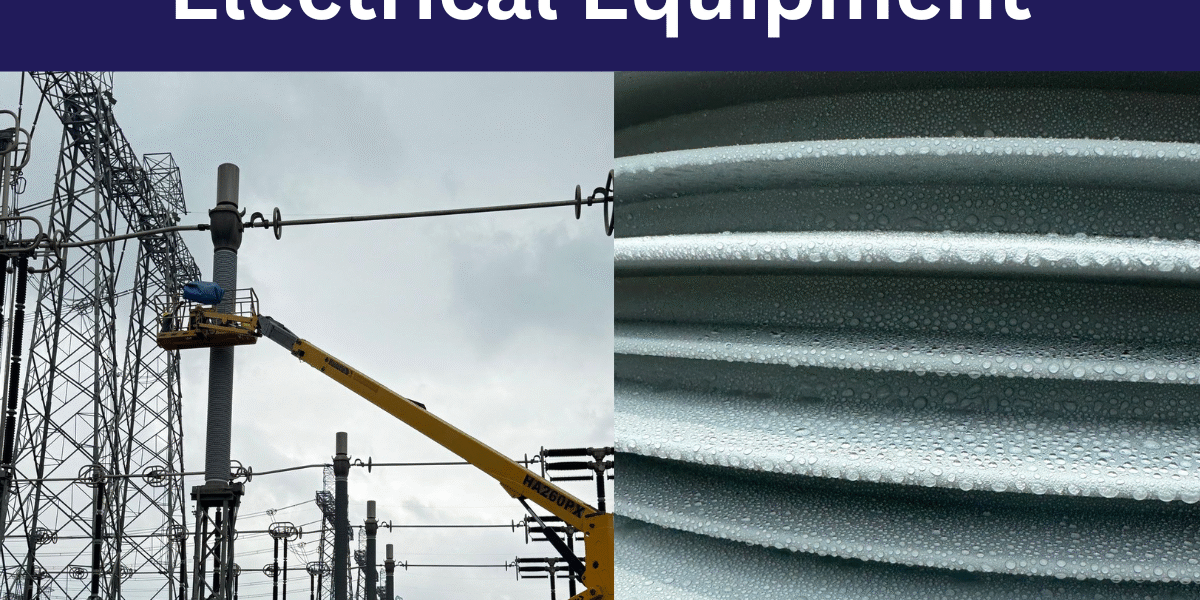Introduction – Why Insulator Protection Matters
Electricity powers everything around us, but behind the scenes lies a fragile reality: insulators exposed to fog, pollution, salt, and extreme weather are prone to failure. Without proper protection, utilities face power outages, high maintenance, and safety risks. That’s where RTV Coating comes in—a breakthrough that promises longer life, lower costs, and zero compromise on performance.
Understanding RTV Coating
What Does RTV Mean?
RTV stands for Room Temperature Vulcanizing, a type of Protective silicone layer that cures at room temperature. This unique property makes it versatile and effective for on-site applications.
How RTV Coating Works
The magic lies in its hydrophobic surface. Water simply beads up and rolls off, preventing leakage currents and flashovers on insulators. Think of it like a waterproof jacket for your electrical equipment.
Traditional Coating Methods vs. RTV Coating
Limitations of Traditional Coatings
Paints, greases, and varnishes have long been used to protect insulators. But they crack, peel, and require constant re-application. Over time, the maintenance costs pile up.
Why RTV Coating is a Game-Changer
Electrical insulator coating, on the other hand, lasts for years with minimal upkeep. It’s durable, self-healing, and performs even under harsh environmental stress.
Key Benefits of RTV Coating
Longer Service Life
While traditional coatings last only 1–2 years,Hydrophobic coating can extend insulator life for 10–15 years.
Reduced Maintenance Costs
Minimal re-applications mean less manpower and reduced costs over time.
Enhanced Electrical Safety
By preventing leakage currents and flashovers, RTV Coating enhances safety for both infrastructure and people.
Performance in Harsh Environments
From foggy regions to coastal areas, Protective silicone layer consistently proves its reliability.
Cost Savings with RTV Coating
Lower Lifecycle Costs
Though the upfront cost may be slightly higher, the long-term savings are unmatched. Utilities save millions by reducing outages and replacements.
Minimizing Power Outages
Every outage costs money and trust. RTV Coating drastically reduces failure rates, keeping the power flowing.
RTV Coating Technology Explained
Silicone-Based Hydrophobicity
The silicone surface repels water, ensuring performance even in high humidity.
Self-Healing Properties
If the coating surface gets damaged, it can restore its hydrophobicity over time.
Resistance to Pollution and Salt
Protective silicone layer doesn’t degrade easily, even in highly polluted or coastal areas.
Real-World Applications
Success Stories in Foggy Regions
In regions like Tamnar ,Electrical insulator coating has shown dramatic improvements in insulator reliability.
Industrial and Coastal Applications
Industries near sea coasts or dusty regions also benefit significantly from RTV Coating applications.
The Environmental Impact of RTV Coating
Sustainability and Eco-Friendly Aspects
By lasting longer, Silicone coating reduces the need for frequent recoating, lowering environmental impact.
Reducing Waste Through Durability
Fewer failures mean fewer replacements and reduced industrial waste.
Comparing Costs – Short Term vs. Long Term
The Hidden Cost of Traditional Methods
Traditional coatings seem cheap at first but drain budgets with frequent maintenance.
RTV Coating as a Smart Investment
With fewer outages and less maintenance, Electrical insulator coating proves to be a cost-saving strategy.
Industry Adoption Trends
Global Utilities Switching to RTV
Across the world, power companies are adopting RTV Coating to secure long-term benefits.
The Future of Insulator Protection
With rising demand for reliability, RTV Coating is becoming the industry standard.
Challenges and Misconceptions About Silicone coating
Addressing Common Myths
Some believe Silicone coating is expensive or hard to apply. In reality, it offers better ROI and easy application.
Installation and Quality Control
Proper application ensures maximum performance. Partnering with experts is key.
How to Choose the Right Silicone coating
Factors to Consider
Climate conditions, insulator type, and operational requirements matter when selecting coating solutions.
Working with Experts
Consulting professionals ensures the right application for long-term success.
Case Study – Hydrophobic coating in Tamnar
In Tamnar, Hydrophobic coating was applied to insulators exposed to heavy fog and pollution. The results? Improved performance, zero flashovers, and reduced maintenance—a perfect example of RTV Coating’s effectiveness.
Conclusion – The Smart Move for the Future
When it comes to insulator protection, the choice is clear: Electrical insulator coating delivers longer life, lower costs, and zero compromise. For industries and utilities aiming to safeguard their infrastructure and cut costs, Hydrophobic coating is the future-ready solution.
FAQs
1. What is Electrical insulator coating made of?
Electrical insulator coating is a silicone-based material with hydrophobic properties.
2. How long does Electrical insulator coating last?
It can last between 10–15 years depending on conditions.
3. Is Electrical insulator coating expensive?
The upfront cost may be higher than traditional coatings, but it saves money long-term.
4. Can Electrical insulator coating be applied in all environments?
Yes, it performs well in foggy, coastal, polluted, and industrial regions.
5. Why should industries choose Electrical insulator coating over traditional methods?
Because it ensures reliability, reduces maintenance costs, and extends the life of insulators.








